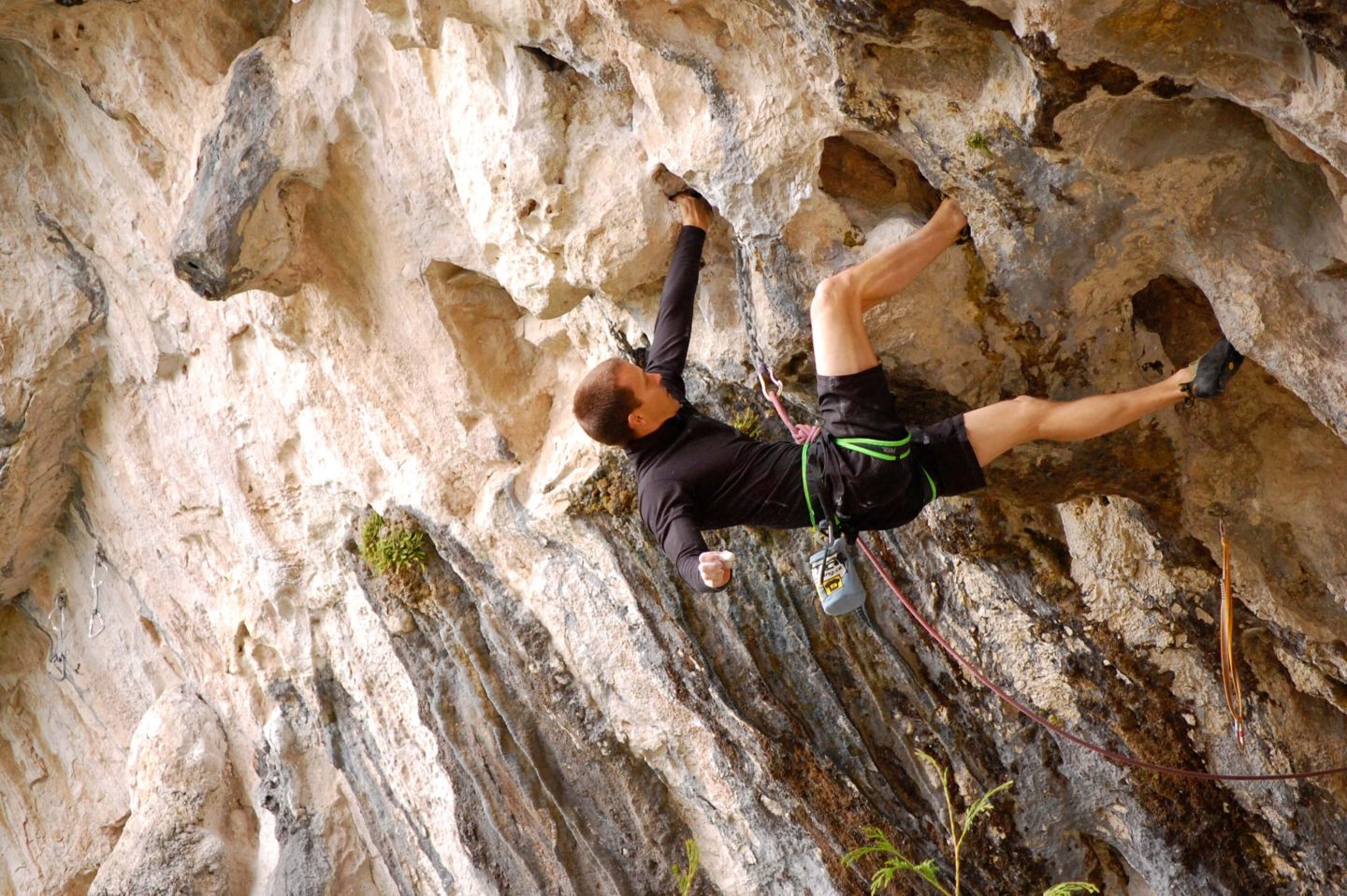Rock climbing is an activity in which participants climb up, down or across natural rock formations or artificial rock walls. The goal is to reach the summit of a formation or the endpoint of a pre-defined route without falling. Rock climbing is a physically and mentally demanding sport, one that often tests a climber’s strength, endurance, agility and balance along with mental control. It can be a dangerous sport and knowledge of proper climbing techniques and usage of specialized climbing equipment is crucial for the safe completion of routes. Because of the wide range and variety of rock formations around the world, rock climbing has been separated into several different styles and sub-disciplines.
Bouldering addicts climb short jumbles of rock, often only a couple of feet high. The key here is linking the moves: because of their short height bouldering problems tend to be fairly intense and technical. It’s hundreds of feet of difficulty compressed into 5-10 moves. Unless you’re climbing so-called highball problems you’ll climb unroped and close enought to the ground to be safe to jump off from. During the nineties there’s been a renewal of interest for this game. Thousands of bouldering areas have cropped up worldwide.
During the late eighties and early nineties climbing on plastic, aka indoor climbing became of fashion. Most competitions are on plastic nowadays. Indoor gyms are excellent places to learn rope handling techniques and to work on the basic moves. However, most of the diehard climbers agree that there’s nothing like natural rock.
Free Climbing is the art of climbing a rock without using your equipment for upward motion. You can only use your arms, hands and other essential body parts to climb. The gear is used for protection only. This is where ethics come into play. A climb is said to be onsighted when a climber leads the climb for the first time without having watched other climbers do it and reaching the end without falling or pulling on gear. If you don’t meet these criteria, you have to start over from the ground up to complete the climb.
In Trad Climbing, climbers use their own gear for protection whereas in free (aka sport) climbing pre-drilled bolts are clipped with carabiners. Trad climbers use friends, chocks, stoppers and other passive and active gear instead. These are devices of different shapes you can stick in cracks or holes for protection without damaging the rock. This is called clean climbing and is the only acceptable way of climbing in some areas. Due to the technicity of this kind of climbing it is mostly reserved for advanced climber.
When Aid Climbing the above rules no longer apply. Because of the sheer difficulty of the rock pulling on gear is often the only way to get up. This kind of climbing involves staying on the rock for several days (Climbs called Big Walls.) and handling massive amounts of gear. It requires an extreme level of technical expertise and a certain sense for logistics. You’ll have to haul your supplies up the cliff in special haul bags and sleep on the rock in hammocks or portaledges. For adventurous souls only
